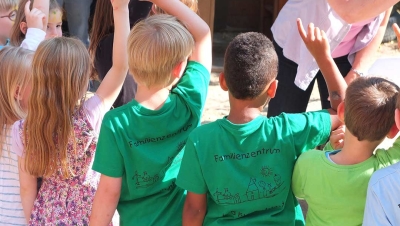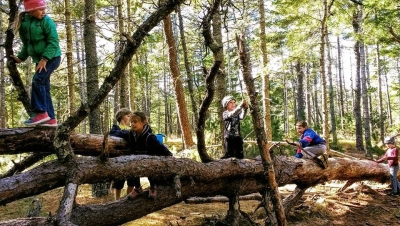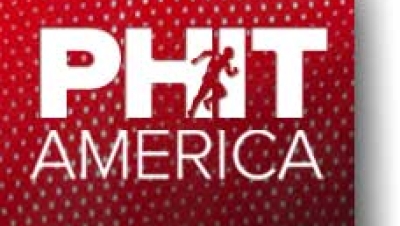Sundial Project Brings Community Closer Together
The time is now. At least that is what Michael Orelove finally said about an idea that was generated 20 years ago during a visit to Seattle.
While on a visit to Seattle, Orelove came across a sundial that was located on the ground and used a person as the gnomon. Therefore, the person's own shadow is read and the time can be found from that.
Orelove was impressed with the idea and thought that the same thing could be done in his hometown of Juneau, Alaska. However, time moved on and he did little about his sundial project.
But after his niece, Eden Orelove did a science project on sundials, he was motivated to put the project in motion.
"I contacted my niece who had done a science project a few years earlier on sundials," Orelove said. "After talking with her, we contacted the mayor and then started the project."
The Oreloves involved the mayor, and other civic organizations, to make the project a reality. With the support of the mayor, a proper location for the sundial was found.
"We placed the sundial in an area right downtown by the docks," Orelove said. "There is a nice big plaza there that had enough room and was centrally located. My niece and I went to the mayor and she gave us permission. After that, we began contacting the local organizations and started the project."
But it was the involvement of the various community organizations that may have been what made the project so successful. There were many ideas given as to how the project should be done, but when it came down to it, Orelove wanted to get something done that was positive without being expensive.
"People suggested that we do it as a fundraiser, but we wanted to give non-profit organizations in the city a chance to be a part of it without having to pay," Orelove said. "We supplied the paint and the different organizations each painted a number. Each number is different. They could paint it however they wanted."
And the numbers ended up as different as the organizations that painted them. However, each number told a story about the community. Clowns from the Juneau Joeys Clown Alley 11310 painted the "6" on the dial with a clown's smiling face. The members of the community's 4-H club designed the "4" with the organization's colors of green and white. There was even a number painted by Orelove that recognized the efforts of all local volunteers.
" It gives a number of community organizations a chance to work together," Orelove said of the project. "We were able to work together to create a piece of art that happens to be a sundial that can be used and is fun."
But before the painting could be done on the numbers, there was some initial work that needed to be done. The layout of the sundial needed to be calculated, and for this Orelove turned to the services of Douglas Hunt of Modern Sunclocks. Modern Sunclocks is a Scotland based company that uses a computer program to create a grid that shows where to paint each line based on your specific latitude and longitude. The grid is figured to the nearest one-hundredth of a degree and adjusts the grid to take into account where your city is located within the time zone. This allows the human sundial to tell the accurate "clock time." The resulting grid was double checked in Juneau to assure accuracy.
The sundial must be laid out in reference to a true north/south line. The Juneau Community Sundial project organizers used three different methods to find the true north/south line for the project. First, Erik Kellogg used calculations from the Nautical Almanac and a shadow cast by a string to determine the true north/south line. Second, Tim Moore, another local volunteer, used a high-quality compass to determine a true north/south line. Third, Carl Ferlauto used a theodolite, a surveying instrument, to determine the sun's highest point. When the sun is at its highest point it is located due south from where the person is measuring.
All three of these methods found the same true north/south line and the grid was prepared.
A full-size model of the sundial was created of plastic indoors and brought to the site on a sunny day. More volunteers, this time from the local planetarium, laid out the hour coordinates on the sidewalk according to the north/south line that was previously established.
From there, the hour coordinates were painted and the Juneau Community Sundial was opened after an official installation ceremony held at noon on the day of the summer solstice, June 20, 2001.
From that time on, the sundial has been an entertaining and visually stimulating part of the downtown area. Orelove enjoys walking downtown and just watching people use the sundial.
"It's been received very well," he said. "I sometimes go down there and just watch people's reaction to it. I Some people ignore it and others look at it like they're trying to figure out what it is. A lot of people will stop and use it, check with their watch and smile. You'll see parents using it to teach their kids how it works."
Orelove believes that a community sundial would be a welcome addition to any city or school playground.
"The project is good for schools and communities because it's educational and fun at the same time," he said. "There are opportunities to discuss a variety of things with a sundial that you use your own shadow to tell the time. For example, you can talk about why the shadow is longer in the winter and shorter in the summer. There is some astronomy."






Add new comment